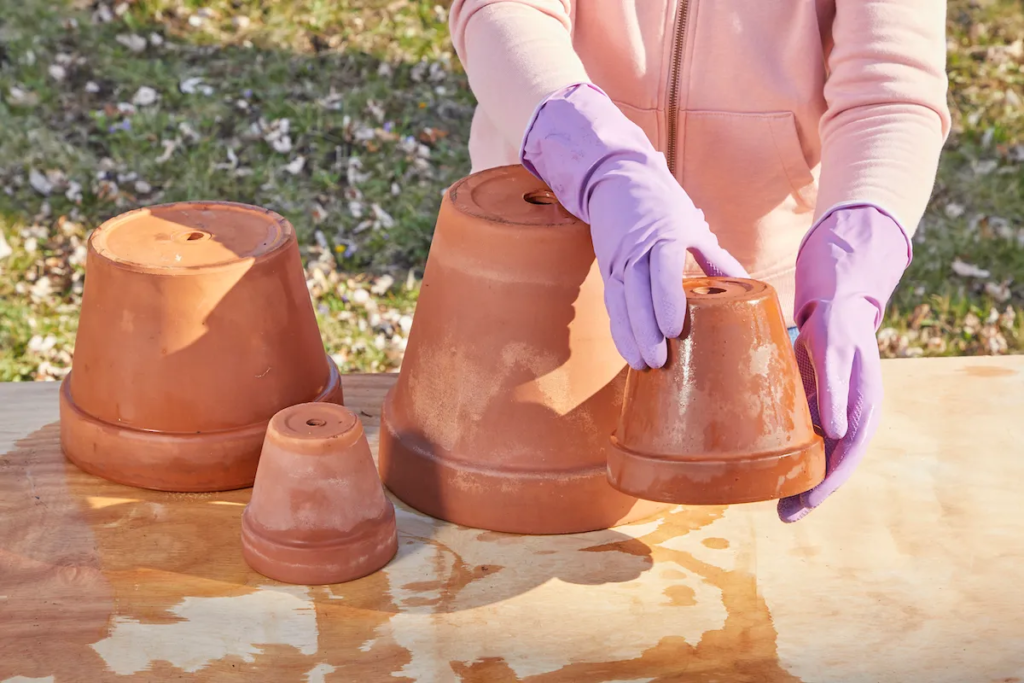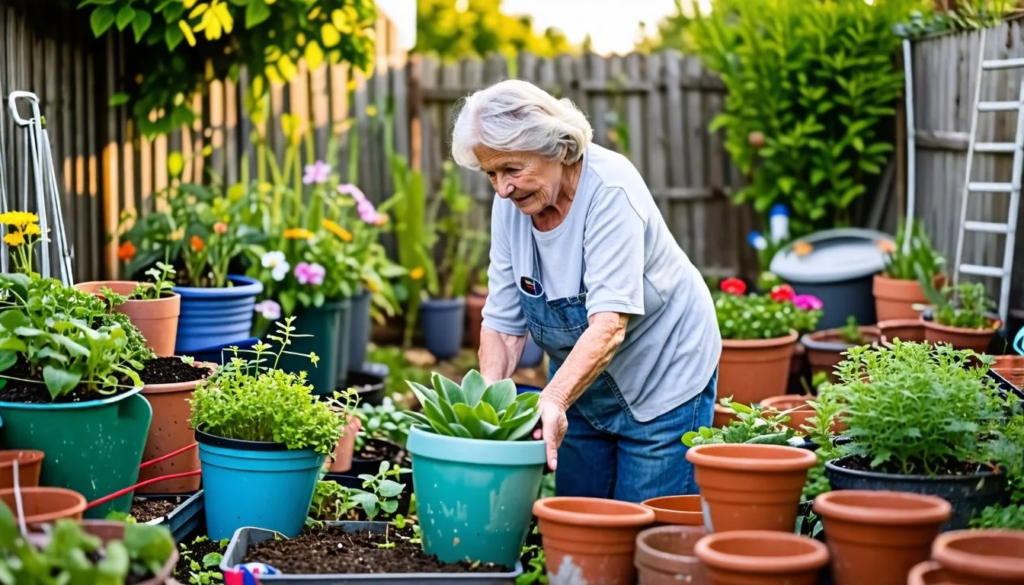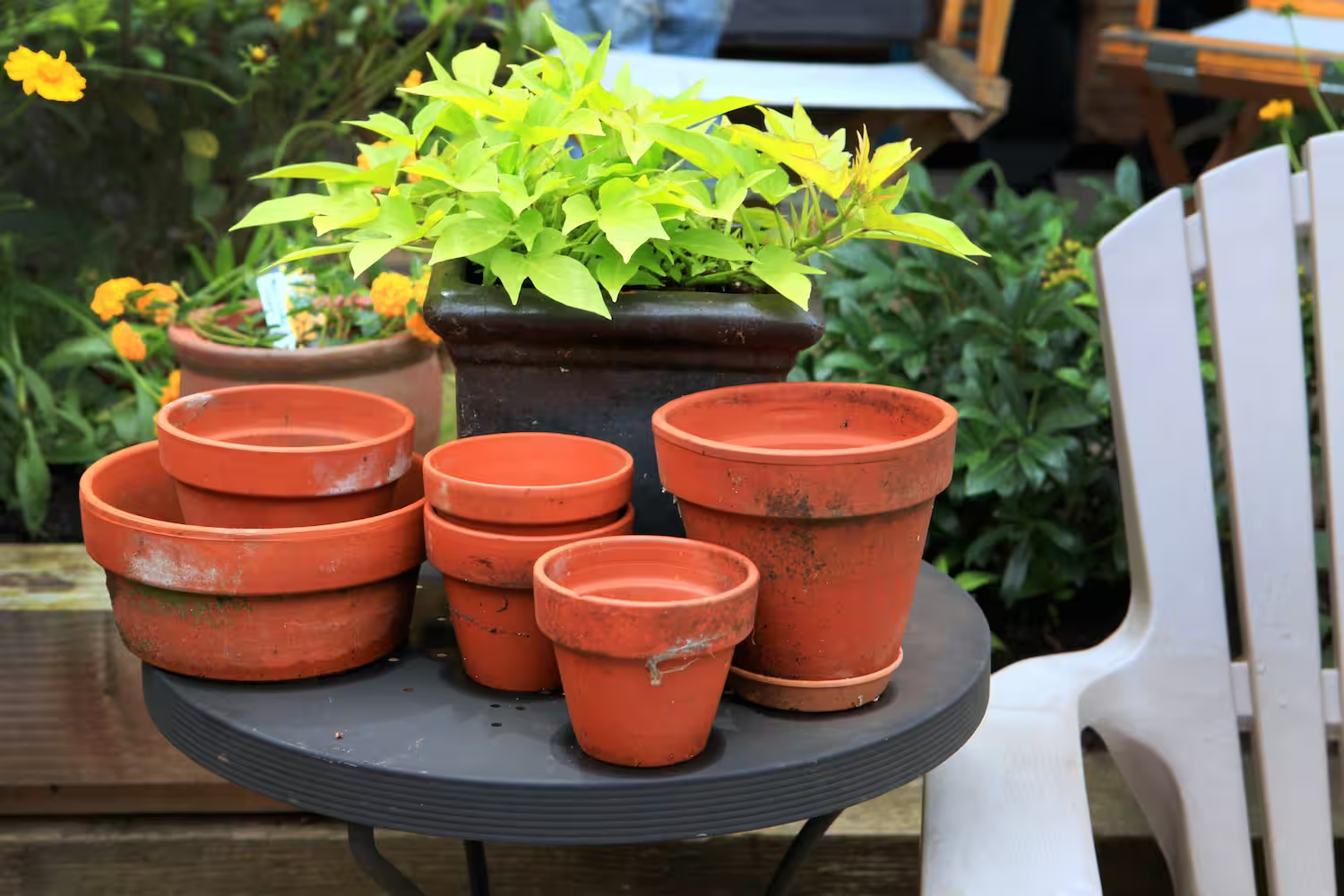As the gardening season comes to an end, many gardeners find themselves with an increasing collection of plant containers. Whether bought, received as gifts, or accumulated from community planting projects, these pots need to be stored properly during the winter months. From delicate clay pots to fabric grow bags, here’s how to store them to ensure they last for seasons to come.
Storing Terra Cotta Pots
Terra cotta pots are a favorite for many gardeners, but they require special care during the winter. These pots are prone to cracking if left filled with damp soil, as freezing and thawing can cause the soil to expand and contract. To protect your terra cotta pots, empty them and allow them to dry completely. It’s important to store them upside down in a dry spot to prevent moisture from getting inside.
While it’s best to clean terra cotta pots in the spring, you can leave them outside during winter to dry out naturally. However, avoid storing them in a moist condition. If you need to store the potting soil from these containers, it’s safer to transfer it to plastic pots or bins, as plastic won’t crack in freezing temperatures.

Storing Frost-Sensitive Pots (Ceramic & Glazed Pots)
Ceramic, glazed, and other frost-sensitive pots are more vulnerable to winter’s freeze-thaw cycles. To keep these valuable containers safe, empty them completely and ensure they are dry before storing. You can place them in an upturned position to help them dry out and store them in a dry area such as a basement, garage, or shed.
For heavy or sentimental pots, such as heirloom glazed containers, it’s best to bring them indoors for extra protection. I store my large, heavy glazed pots in the basement during the colder months to safeguard their integrity.
Plastic Pots
Plastic pots are highly durable and versatile, making them an essential part of any garden. However, they are still susceptible to damage from sunlight and moisture over time. To extend the lifespan of your plastic pots, store them in a dry, dark location. This will help prevent the degradation of thin plastic pots that can become brittle from exposure to the elements.

Plastic pots are especially useful for seed starting, and many gardeners accumulate them through recycling programs. When sorting your collection, keep an eye out for sturdy pots in sizes you will use often. The thicker, more rigid plastic pots tend to last longer than thinner ones.
Plastic Pot Liners
Many gardeners use plastic nursery liners inside decorative containers to simplify potting. These liners are especially handy for inserting plants into larger, more decorative pots. During winter, it’s a good idea to collect and store these liners for future use. You can also use large plastic pots to store potting soil or compost during the winter months. If the soil or compost is slightly moist, that’s fine—just avoid overwatering.
Storing Fabric Grow Bags
Fabric grow bags are increasingly popular due to their breathability and ease of use. However, most manufacturers recommend emptying and cleaning them before storing them for the winter. Prolonged exposure to moisture, sunlight, and the elements can degrade the plastic microfibers used in these bags. Therefore, it’s essential to store them in a dark, dry location.
Before storing, fabric grow bags can be repurposed to collect dry leaves from your garden, patio, or driveway. Simply fill the bags with crumbled leaves and use them for compost, mulch, or bedding for chickens. Once you’re finished, hang the grow bags from hooks in a dry space to keep them safe from pests.
In Conclusion
Properly storing your flower pots for winter not only protects your investment but ensures they remain in good condition for the next gardening season. Whether you’re dealing with delicate clay pots, durable plastic containers, or fabric grow bags, following these simple steps will help extend the lifespan of your gardening tools, making your next planting season a success.
